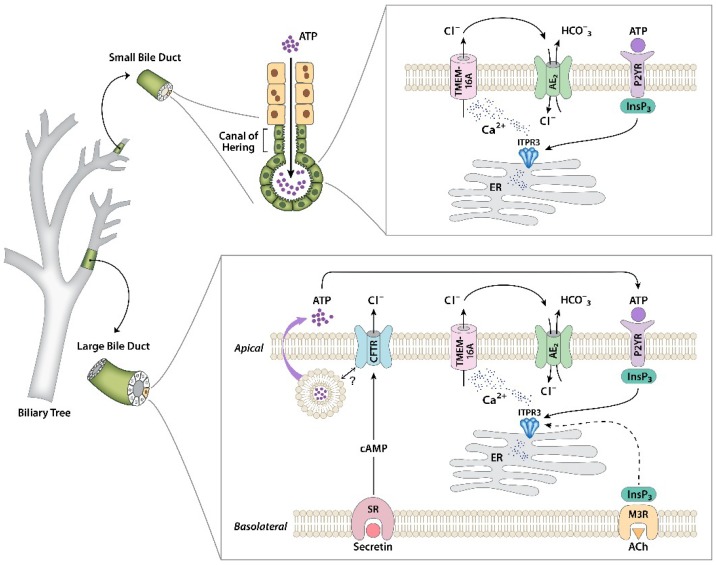Figure 1.
Regulation of bicarbonate secretion in cholangiocytes. Separate signaling pathways that regulate secretion have been identified in large and small cholangiocytes. In large cholangiocytes, secretin receptors (SRs) on the basolateral membrane link to formation of cAMP, which leads to the activation of cystic fibrosis transmembrane conductance regulators (CFTRs), causing apical Cl− efflux. This also stimulates exocytic release of ATP into the ductular lumen, through a mechanism that has not yet been identified. Luminal ATP then binds to apical P2Y receptors to stimulate intracellular Ca2+ release via inositol 1,4,5-trisphosphate receptor isoform 3 (ITPR3), which in turn activates Cl− secretion through TMEM16A in the apical membrane. The resulting Cl− gradient across the apical membrane drives the AE2 Cl−/HCO3− exchanger, resulting in net HCO3− secretion. This pathway can also be activated directly by biliary ATP secreted from upstream hepatocytes. Alternatively, inositol 1,4,5-trisphosphate (InsP3) formed from the stimulation of the M3 muscarinic receptor can stimulate secretion, although there is some evidence that this may act through Ca2+ released from ITPR1 and ITPR2 rather than ITPR3. Small cholangiocytes lack SRs and CFTRs, but have the same apical calcium signaling machinery to link to HCO3− secretion that is found in large cholangiocytes. Figure modified in part from References [9,30].

